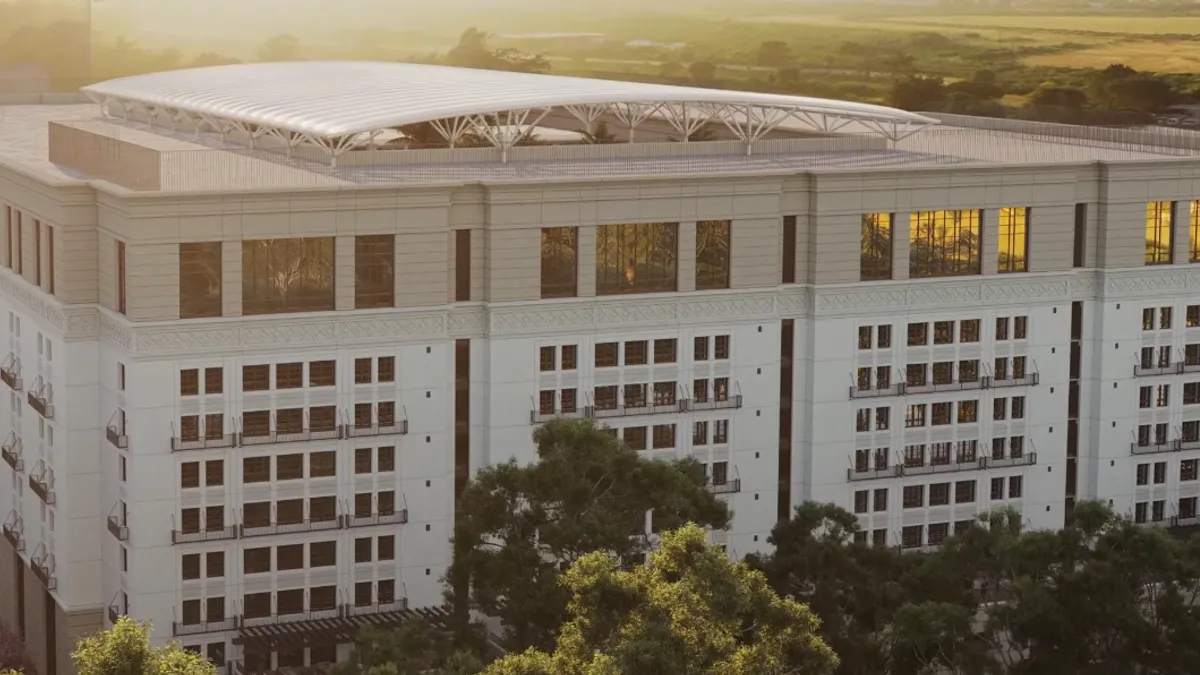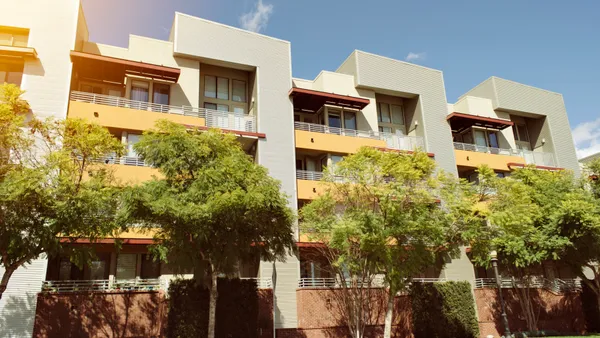Dive Brief:
- The University of California at Santa Barbara has canceled its plans to build Munger Hall, a controversial 3,500-bed dormitory in which the majority of rooms would not have had windows.
- “The campus is moving forward with a separate student housing project in order to meet our [Long Range Development Plan] targets,” Kiki Reyes, UCSB media relations manager, said in a statement to Multifamily Dive.
- The new project, announced last month, will be constructed in two phases. The first, located on the former Munger Hall site, is expected to add a maximum of 2,250 student beds arranged in apartment or suite-style units of varying sizes and configurations, according to UCSB. Phase 2, a 1,250-bed infill development at existing residence halls, will be built at the same time as Phase 1. The new beds are expected to open for the 2027-2028 school year.
Dive Insight:
The Munger Hall project, referred to by some detractors as “Dormzilla,” was designed by 99-year-old billionaire and Berkshire Hathaway executive Charlie Munger. He had designed another student housing project at The University of Michigan Ann Arbor, also without windows in most student bedrooms, which opened in 2015.
He was expected to contribute $200 million to Munger Hall’s construction. Now with the revised project, the university expects to fund the new dormitory project with traditional debt financing, according to Reyes.
The design had faced criticism from students and faculty for its density and layout. The original plan called for 4,536 student beds across 11 stories with most student bedrooms facing the interior without access to natural light. In late 2021, Dennis McFadden, a consultant on UCSB’s architectural review board, resigned his position in protest of the project’s approval.
In November 2022, the university announced that it would be reducing the size of the Munger Hall plan from 11 stories to nine, cutting the bed count down from 4,536 to 3,500.
At the time, Reyes told Multifamily Dive that the update was made in response to concerns about building density and height, and that the university would “continue to work collaboratively to incorporate community feedback.”
The university’s Long Range Development Plan calls for the construction of 5,000 new beds on campus by 2025 in order to meet the needs of the school’s growing enrollment. Of this number, 3,500 beds remain to be added; both Munger Hall and the new plan were devised to meet this goal. Despite these ongoing issues, Reyes noted that UCSB had approximately 250 open beds in its campus housing this fall.











